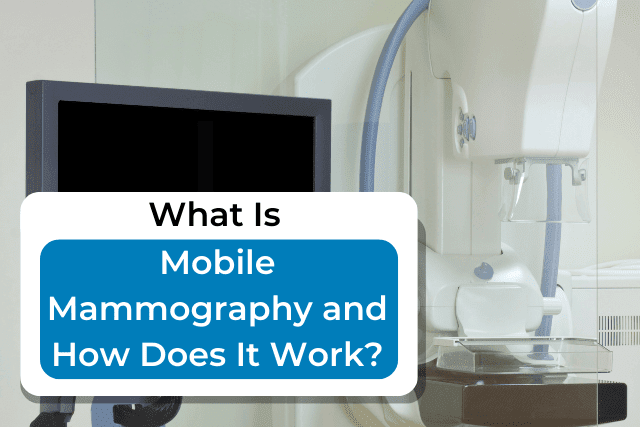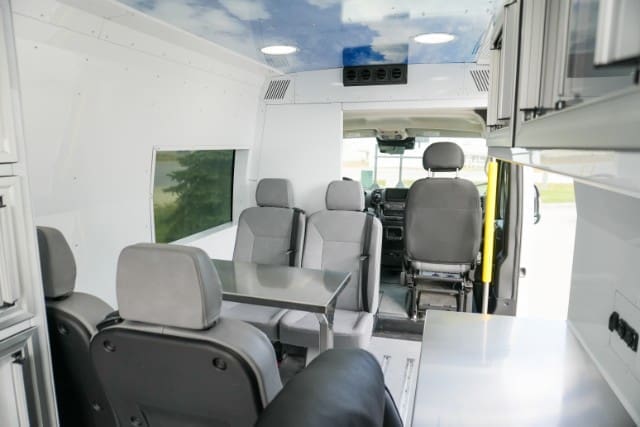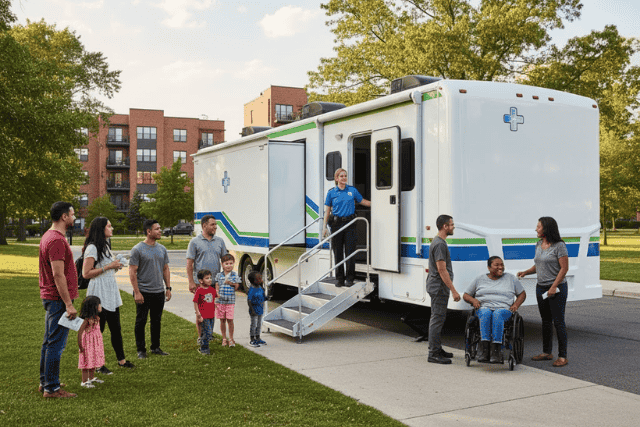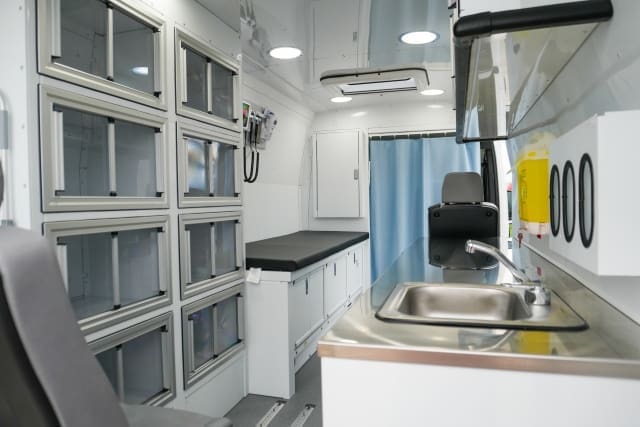Did you know regular mammograms can reduce the risk of dying from breast cancer by over 65%? Yet, thousands of people miss these life-saving screenings each year. For many, it’s because of one overwhelming barrier: location. The challenge feels impossible, with traditional mammography services often out of reach for many, especially for women in rural areas or communities with below-average incomes.
If you’re leading a health organization or hospital, you’ve likely faced this exact problem. It’s frustrating—you see the gap, know the stakes, and understand that lives depend on finding a solution. This is where mobile mammography may be the answer.
At AVAN Mobility, we understand these challenges because we’ve spent over 10 years designing mobile medical solutions to reduce barriers like these. We’ve seen how organizations like CalOptima and the Community Clinic of Southwest Missouri use our mobile medical units to make a difference, reaching people where they are.
We know we’re not the only manufacturers, but we bring a focus on innovation and inclusivity that helps address your specific needs. Our experience can help you find the right fit without feeling boxed in by bias or limitations.
In this article, we’ll introduce you to mobile mammography and explain how it works. We’ll also walk you through how these units are transforming healthcare and how they might be the answer to bridging the accessibility gap in your community.
Mobile mammography: what is it?
Mobile mammography is an effective way to bring breast cancer screenings directly to people, no matter what part of the U.S. they live in. Instead of having to visit a hospital or clinic, mobile mammography units bring the same high-quality screenings right to a patient’s community. These units can go everywhere—from rural towns to urban neighborhoods that don’t have enough clinics.
Why is this service so important?
Breast cancer is common in the U.S., but many women miss their screenings due to barriers like location, cost, or time. Early screenings make a huge difference in survival, yet not everyone has easy access. Mobile mammography solves that problem by bringing these healthcare screenings closer to those who need them.
Who is less likely to receive mammograms?
People in rural areas: One study found that women living in rural parts of the U.S. often have fewer healthcare options nearby. Going mobile with this service helps by bringing screenings to these areas so women don’t have to travel long distances or miss work.
Low-income communities: Many people in lower-income communities face extra costs just to reach a clinic. Some don’t have health insurance and a stable income. Some organizations, like Betty Ford Breast Care Services, offer mobile mammograms for uninsured or underinsured women.
Busy, working people: Many skip mammograms because of tight schedules or no transportation. Taking your services mobile makes it easier to fit screenings into their day by setting up near where they live or work.
Why this makes a difference
- Finds breast cancer early: Early detection saves lives by catching signs of cancer sooner.
- Cuts down on travel: People don’t have to travel far to get a mammogram.
- More accessible mammography screenings: Provides screenings in neighborhoods and communities that usually lack nearby options.
With mobile mammography, the goal is to make mammograms easy and accessible for everyone in the U.S., helping save lives and reach more people.
How does mobile mammography work?
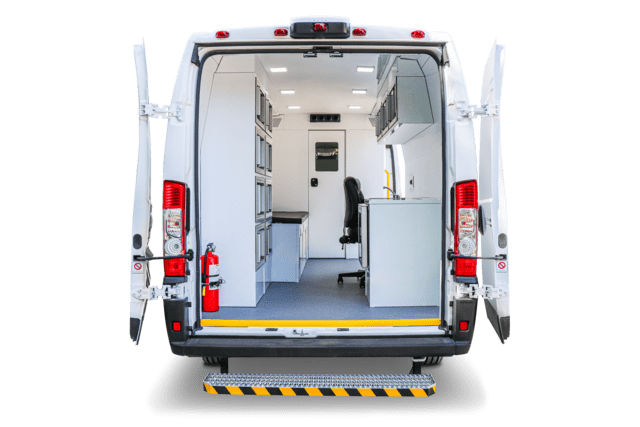
Mobile mammography uses special vehicles customized with portable mammography equipment directly to communities. This means people can get their breast cancer screenings without traveling far. Different types of vehicles can be used for this purpose, such as mobile medical vans, buses, or trailers.
Let’s look at an example:
Imagine a small town in the U.S. that doesn’t have a nearby clinic offering mammograms. An organization decides to bring a mobile mammography van to the community. They set up their mobile onsite mammography unit in a local park where everyone can see it.
One day, a woman named Sarah hears that she can get a mobile mammogram. She feels a bit nervous but knows how important it is to get a screening. When she steps into the van, she finds a friendly staff ready to help. After her screening, the staff tells her they will send the results soon.
A few days later, Sarah gets a call. The doctor explains that they found something suspicious in her mammogram. Because of of this vehicle that came to her town, she was able to catch her breast cancer early. Thanks to this timely screening, she can start treatment right away, which helps save her life.
Mobile mammography is changing lives by bringing these important screenings to people in their own communities. It helps ensure that everyone, no matter where they live, has a chance at early detection and better health.
Which vehicle should you choose for mobile mammography?
When it comes to mobile mammography, picking the right vehicle is super important for your program’s success. The type of vehicle you go with will depend on what you want to achieve and the needs of your target community. Each vehicle option has its own perks.
What are the benefits of different mobile mammography vehicles?
| Vehicle Type | Benefits |
| Mobile medical vans | Mobility: Mobile mammography vans are small and versatile, making them easier to park and get around in both rural and urban areas than other vehicle options. You can take them almost anywhere.
Personal touch: Their smaller size helps create a cozy and private experience for patients, making them feel more at ease during screenings. Cost-effective: Vans cost less to operate than larger vehicles. They’re a budget-friendly mobile mammography option. |
| RVs and buses | Roomy capacity: If you’re looking at starting a bigger mobile mammography program, RVs and buses offer plenty of space. They can fit numerous patients and equipment, which is great for larger events.
Multiple services: Some RVs and buses can provide different types of health services at the same time, making them versatile options for community outreach. |
| Trucks and trailers | Space and comfort: Similar to buses, the extra size in trailers allows you to serve multiple patients at once. Remember that you’ll need a truck to haul a mobile mammography trailer.
Custom options: You can design a trailer to fit your specific needs, adding features like waiting areas and consultation rooms to make it feel welcoming. |
Factors to consider
Scope of your program: Think about how many people you want to serve and what services you’ll provide. This will help you decide which vehicle fits best.
Budget: Don’t forget to consider your budget for getting a vehicle. This will play a big role in your decision. Keep in mind that larger mobile mammography units also require a much larger budget and more maintenance costs.
Community needs: Look at the specific needs of your community. Are there areas that lack access to healthcare? Tailor your choice to meet those needs.
Choosing the right vehicle for your mobile mammography program is all about finding the best fit for your goals and the people you want to help. Whether you go with a mobile mammography unit, a bus, or a trailer, each one has its own advantages. The right choice can make a real difference in how well you connect with women in your community who need care.
Looking for more information about mobile mammography?
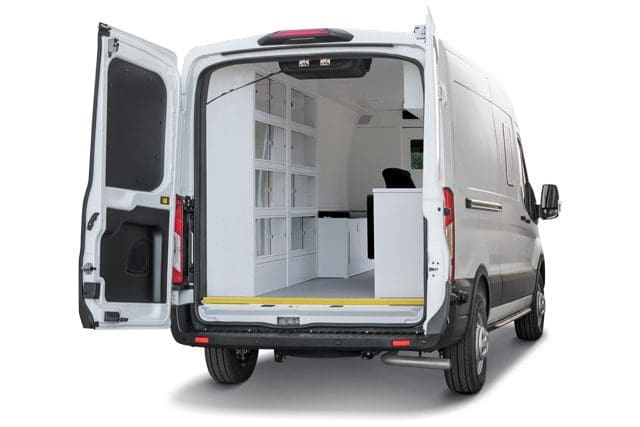
You came here looking for answers about mobile mammography and how it can help people around the U.S. Now, you’ve learned why mobile mammography is important, how it works, the different vehicle options, and the big impact it can have on women’s health.
At AVAN Mobility, our goal is to manufacture vehicles that organizations like yours can use to bring life-saving services to their communities. We care about making a difference, and that’s why we are leaders in this field. If you have questions or want to know more about how a mobile mammography unit can help, click the button below to chat with a mobility expert.
Are you not ready to talk just yet? No problem! We have more resources for you to explore and learn about mobile mammography and how it can make a real difference.
Start by checking out our article on the Mobile Clinic. This unit can be customized for mobile mammography services.
After that, check out the video below on the cost of a mobile medical unit. This will give you a better idea of how much you can expect to pay if you decide to choose us to manufacture your mobile mammography unit.
Mobile mammography FAQ
Q: How are mobile mammography services funded?
A: Mobile units operate under different payment models, including grant funding, philanthropy, and fee-for-service arrangements. The approach depends on local demographics and needs.
Q: Do mobile units accept walk-ins or self-referrals?
A: Some mobile units allow self-referrals, while others require a clinical breast exam before a patient can proceed. This ensures women with abnormal exams receive diagnostic mammograms while others get screening mammograms.
Q: What imaging technology is used in mobile mammography?
A: Mobile units often use a mix of digital mammography and digital breast tomosynthesis (DBT). The goal is to shift fully to DBT for better cancer detection and fewer recalls, with images sent securely to hospitals for review.
